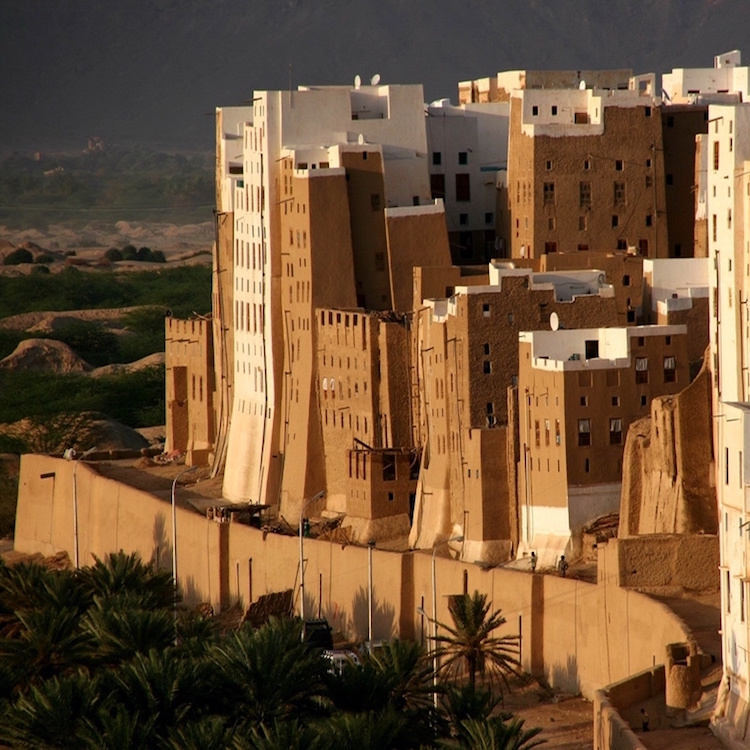Living in the Southwest, you either develop an affinity or disdain for the regional Pueblo-Revival adobe architecture with its terraced facades, set-backs and flat rooftops. Employment of sun-dried brick is not unique to the Southwest, and is common throughout the world. So when I saw this impressive fortress-like walled city of densely packed mud towers, I was blown away — Hello Shibam, the so-called ‘Manhattan of the desert!’
Above Image: Mud City of Shibam, Yemen


The Yemeni city is revered for its ingenious historical urban planning methods such as its security-minded ground levels, multi-storied buildings and high windows. This architectural narrative not only reflects a population deeply devoted to traditional Muslim culture, but is also a real world response to the need for refuge from outside attacks, protection from competing rival families while simultaneously showcasing the affluence of its residents.
The city is also fortified by a spur raising its foundation hundreds of feet out of the surrounding wadi flood-plane, ArchDaily writes.
A protected UNESCO World Heritage Site since 1982, the city is home to densely packed buildings ranging from four to eight [stories], beginning in 300 AD but now mostly built after 1532. Thanks to a fortified ring wall, the city has survived nearly two thousand years despite its precarious position adjacent to the wadi floodplain.

The surrounding flood-plane, however, serves as a critical resource for Shibam’s residents. The spate irrigated fertile land is used to grow food as well as to generate building materials — mud.
After crops are harvested from the surrounding land, soil is collected for construction inside the walled city – and construction is a continuous process, with the towers requiring regular maintenance with fresh coats of mud.
UNESCO says the practice of mud building no longer exists anywhere else in the region.
Do you love or loathe this mud city? Let us know in the comments.



ABSOLUTELY LOVE such an incredible man-made construction. With all due respect, how could anyone loath it? These photographs are excellent. I fear for the city since Yemenis are suffering so due to the recent attacks on certain areas of the country, not to mention the actions of those who would do harm to such priceless treasures of World Heritage. I hope it can survive and thrive for many more centuries, but I am skeptical since we have witnessed such atrocities as the destruction of Timbuktu (https://www.theatlantic.com/news/archive/2016/09/timbuktu-verdict-icc/501761/ draining of the ) or the draining of the Marsh Arabs’ wetlands and reed architecture: http://news.nationalgeographic.com/2015/07/150709-iraq-marsh-arabs-middle-east-water-environment-world/
Incredible! Very inspiring architecture and landscape for ceramicists, looks like dry slab built red clay.
Wonderful!
LOVE!!
Magnifico